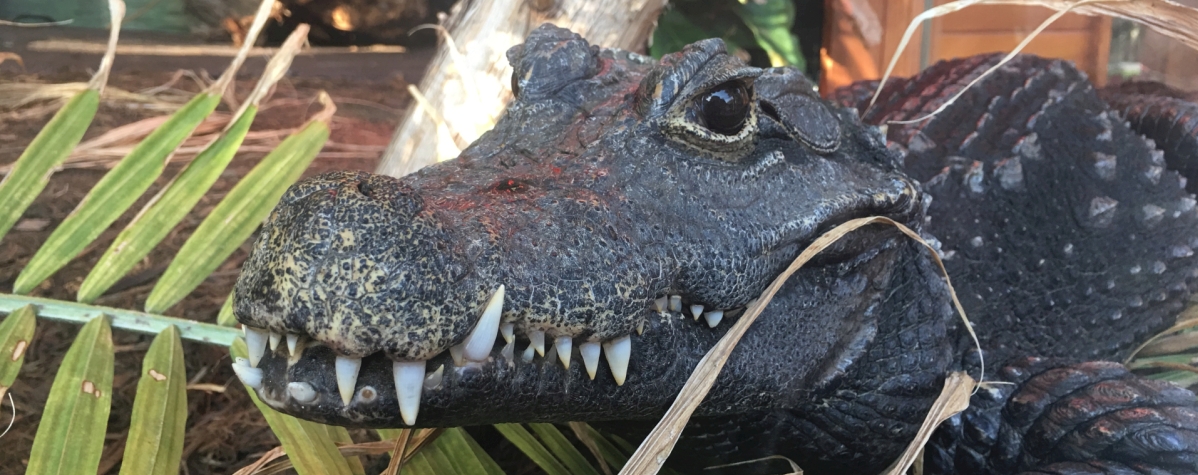Eastern Box Turtle
Scientific Classification 
| Species |
Terrapene carolina carolina |
| Kingdom | Animalia |
| Phylum | Chordata |
| Class | Reptilia |
| Order | Testudines |
| Family | Emydidaw |
| IUCN Status | Vulnerable |
Appearance and lifespan
The Eastern box turtle gets its name from its high upper shell and large lower shell. These features allow the turtle to close its shell and seal its head and limbs safely inside. Box turtles can be easily identified through their bright markings and domed shells. They are typically a brown or olive green colour with patterns of bright orange or yellow. Male and female box turtles may be distinguished from one another based on the colour of their irises. Adult male Eastern box turtles have red irises where adult females have yellowish-brown irises.
Box turtles may live more than 100 years!
Behavior and reproduction
The activity of the box turtle largely depends on the temperature of their environment. During the summer months box turtles restrict their activities to the morning hours, however in the spring and fall they may be seen foraging during daylight hours and even sometimes basking in the hot sun. Box turtles go into hibernation in October or November; they burrow as deep as 60cm into the ground and emerge from hibernation in April.
Mating between box turtles typically occurs in the spring. The females lay eggs in May, June or July with a clutch size ranging from 1 to 11 eggs. The eggs will hatch in late summer following a 70 to 80 days incubation period.
Ecology and habitat
The common box turtle can usually be found inhabiting woodland areas, marshy meadows and brushy grasslands. Box turtles often inhabit in areas in close proximity to streams and ponds. They are primarily terrestrial animals however, in summer months can be found near the edges of swamps and marshlands in an effort to stay cool. Box turtles are omnivorous and their diet consists of animal and plant matter including earthworms, slugs and wild berries.
Food at the Zoo
At the park and zoo, our box turtle is fed salad, earthworms, commercial turtle pellets and crickets.
Threats
Despite the wide range of the Eastern box turtle, many populations are in decline. The primary threats to the turtles are agricultural and urban development. These developments are destroying their habitat and bringing additional threats as many box turtles have been driven out of their habitat and killed on roads.
Did you know?
- If they become too hot they will smear saliva over their legs and head to cool down.
- Box turtles can be dangerous to eat. They may eat poisonous mushrooms and the toxins may linger in their flesh.
- There are six subspecies of the common box turtle. Each differ slightly in appearance. They range over much of the United States and parts of Mexico.
- The Eastern box turtle is also referred to as the Common box turtle.


